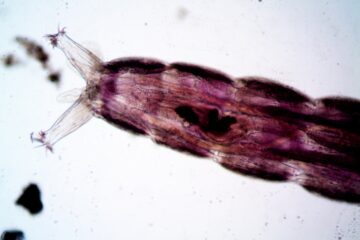![]()
Introduction:
An injury may be understood to be the stoppage of the natural progression of a cluster of tissues in the body of an individual. Under Section 44 of the Indian Penal Code, it is provided that injury can be defined as any wound caused illicitly to an individual’s body, mental state of being, standing, or property.
The capacity to adequately assess, record and scrutinize injuries that have been succored is a crucial aspect of any forensic physician or pathologist’s role. Crimes based on violence are rapidly increasing throughout the globe and thus, it becomes necessary to study the outcomes of it in order to react and respond better in future instances.[1]
Scope
The aim of examining and recording this data is to help in understanding how a wound or injury occurs to be, which is usually an issue or a point of contention in the court of law. These two skills ought to be within the capacity of any doctor, though they are rarely performed completely and adequately. Therefore, this paper seeks to provide a general overview of the injuries studied in forensic science coupled with peripheral aspects such as its history and international perspective.[2]
Injuries in Forensic Science
Various categories exist for certain injuries, the anatomical division of which, categorizes them into that of mechanical and thermal.
Medico-legal division of injuries is dependent on the gravity (simple or heinous), the mode (suicidal, homicidal, or accidental), and the moment of death (ante-mortem or post-mortem).
- Incised injuries are caused by weapons with honed edges and result in a razor-clean dismantling of tissues. In this case, the length of the wound is more severe than its depth.
- Abrasion injuries are those caused through the use of blunt force and result in the ruination of the epidermis’ exterior layers. A pure abrasion wound does not usually bleed and it is solely a two-dimensional wound.
- Lacerations refer to the wrecking of a person’s skin and internal organs. It occurs due to blunt force inflicted on the tissues or the skin of the body. These are three-dimensional wounds, the margins of which, are erratic and jagged.
- Stab wounds are mechanical injuries, the depth of which is larger as compared to the length and breadth. They are often an outcome of the use of knives, bayonets, and blades.
- Burn injuries are wounds that occur on the body through the infliction of dry heat such as fire or radiation.
- A Contusion is the blood’s outflow into the tissue as a result of the fissure of vessels, particularly, the capillaries. They are an outcome of blunt force trauma.
- Firearm wounds refer to both the entrance and exit injuries. They differ in shape and size, based on the proximity, velocity, and target location of the firing.
- Electric current, on being inflicted on one’s body, results in different injuries like muscle spasms, burns, and intense charring.[3]
History
The emergence of forensic science still needs more delving into because this subject as a discipline has not been much in deliberation until not long ago. On raising the recognition of the fine-drawn significance of forensic science historically, one must not but hype up this field of science’s approbation.
The term “forensic” originates from the Latin nomenclature “forensis” which means “for a forum.” Forensic Science is employed in accordance with any field of study that can be connected to that of law. It is the application of scientific methodologies and formulae to questions or points of contentions existing in the legal sphere.
During the 16th century in Europe, the collection of data on the cause and mode of an individual’s death was initially commenced at the hands of medical practitioners. A French army surgeon, Ambroise Paré, systematically examined the impact a violent death bears on one’s internal organs. Italian surgeons, Fortunato Fidelis and Paolo Zacchia established the basis of modern pathology by assessing the changes that take place in the body structure as a result of a disease.
At the advent of the 17th century, the significance of forensic science was noticed and accordingly, boosted along with other advancements in the field of science.[4]
Legislations
A simple injury or wound results in somatic pain or sickness in any individual for a short period and does not cause a risk of loss of life. On the other hand, a grievous injury occurs in light of some specific conditions as provided by Section 320 of IPC:—
- Emasculation i.e., a man impotent.
- Permanent loss of vision in either eye can happen through poking the eyes or subjecting them to acid.
- Permanent loss of hearing in either ear, in which the tympanic membrane or auditory nerves are damaged.
- Member or joint austerity where a particular limb can no longer perform a distinct action.
- Permanent disablement of any member or joint may result in that person becoming a life-long cripple due to his physical disability.
- Permanent malformation of the skull or face can lead to harm to one’s professional establishment where their face is a crucial element.
- Bone dislocation of fracture from its normal anatomical position.
- Rendered incapable to perform any activity for at least one month.
The medico-legal opinion regarding injuries must contain the entire description and an opinion about its legal state as it helps the court of law to decide upon the seriousness of the crime and also during the sentence evaluation of the suspect.[5]
International Perspective
Numerous countries have their forensic science associations whose purpose is to back the requirement of forensic scientists, such as the Forensic Science Society in the United Kingdom, the Canadian Society of forensic sciences, the American Academy of Forensic Science, etc. These institutions grant forensic scientists the chance to make connections, exchange technical data, gain exposure, and master practice by way of conferences, newsletters, reviews, and the web. Additionally, Interpol hosts a triennial Forensic Science Symposium that is attended by both forensic scientists and legal officers.[6]
Incognito Forensic Foundation (IFF Lab) is an Indian organizational addition to the world of forensic science, the headquarters of which is located in Chennai and the office of which is at Bangalore. The IFF Lab can change the forensic field for the better. It is a crucial contribution towards criminal investigations and digital forensics in the country. It seeks to preserve the rich history of forensic science and establish new standards for the significance of forensic science in the near future.[7]
Procedural Factors
Wounds heal, and hence the appearance of one post-assault depends on time. Assaults might not be reported for a long while subsequent to the event. There may be numerous injuries from various occurrences. Pin-point times should be sought for every one of them. If more than one type of assault has taken place, records should be made with clarity of which injury was accounted by which implement.
If an injury is inconsistent with the account provided, the same ought to be questioned at any given time. In several cases, individuals who have been involved in skirmishes or violent brawls are unaware of plenty of injuries that are caused to them.[8]
Conclusion
Forensic Science boasts of a rich but underestimated evolution with larger potential ahead. Advancements in forensic science are a ceaseless process and each passing moment introduces a new methodology into the world of forensic science.
Despite many developments, any form of inquiry still necessitates a human brain to assess and judge the events of an occurrence. Currently, a forensic investigator is entitled to the benefit of employing numerous instruments reflective of medical and technological advancements which are available to them.
If anything, an expert criminal investigator carries the responsibility of accurately studying, procuring, and collecting proof from a crime scene by utilizing every accessible scientific and technological equipment.
Nevertheless, it must be remembered that the human factor is a sine-qua-non element without which an investigation is rendered incomplete.[9]
References:
[1] Peel, M., Iacopino, V, The Medical Documentation of Torture, GREENWICH MEDICAL MEDIA, 2002.
[2] Payne-James, J. J, Assault and injury, GREENWICH MEDICAL MEDIA, 2003, pp. 543–563.
[3] Abdul Barek, Medicolegal aspects of Hurt, Injury and Wound, RESEARCHGATE (Nov., 2013) https://www.researchgate.net/publication/269557204_Medicolegal_Aspects_of_Hurt_Injury_and_Wound.
[4] Anonymous, Exploring the History of Forensic Science through the ages, INCOGNITO FORESNSIC FOUNDATION, https://ifflab.org/history-of-forensic-science/.
[5] Akshay Deokar, Injury (Forensic Science), SLIDE SHARE (Jun., 2018) https://www.slideshare.net/AkshayDeokar3/injury-forensic-science.
[6] Anonymous, An International Perspective, WHAT WHEN HOW http://what-when-how.com/forensic-sciences/an-international-perspective/.
[7] Anonymous, Exploring the History of Forensic Science through the ages, INCOGNITO FORESNSIC FOUNDATION, https://ifflab.org/history-of-forensic-science/.
[8] Payne-James, J. J., Wall, I, Forensic Medical Notebook, GREENWICH MEDICAL MEDIA, 2001.
[9] Anonymous, Exploring the History of Forensic Science through the ages, INCOGNITO FORESNSIC FOUNDATION, https://ifflab.org/history-of-forensic-science/.



0 Comments